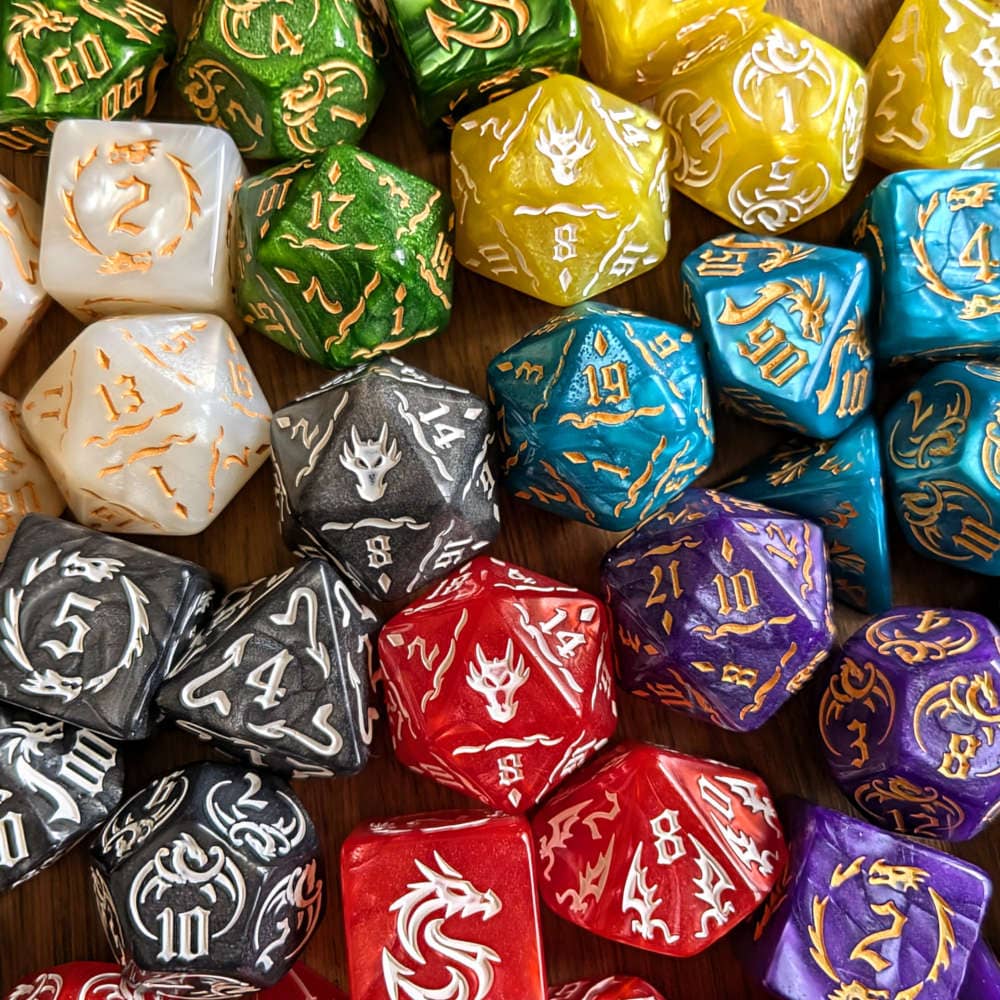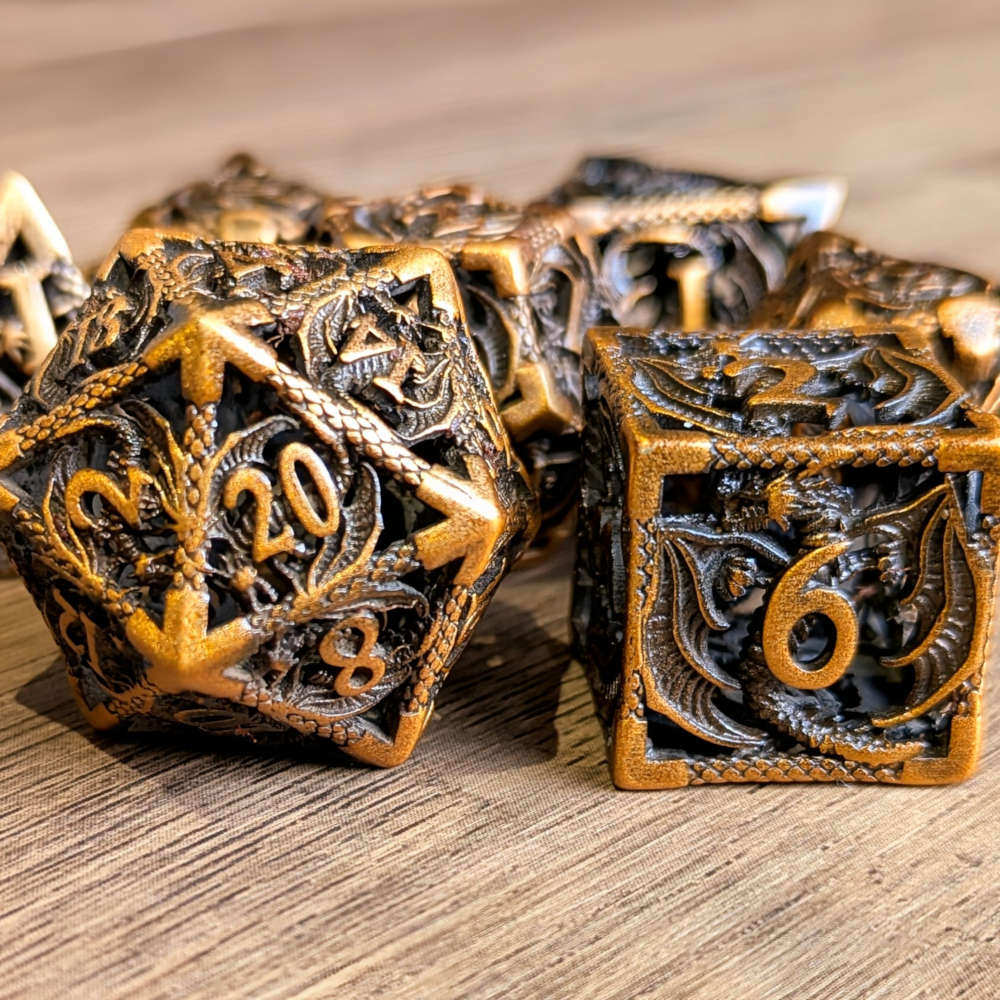How to deal with problem players in D&D

Dungeons & Dragons is built on collaboration, but sometimes, a problem player disrupts the game - whether by derailing the story, causing conflict, or showing main character syndrome.
Knowing how to deal with problem players in DND is essential for maintaining a fun and engaging experience. In this guide, we’ll break down the different types of problem players and provide strategies to handle these challenges while keeping the adventure enjoyable for everyone at the table.
What is a problem player?
A problem player in DND is someone whose behavior disrupts the game for others. This can include being overly aggressive, constantly arguing rules (rules lawyering), refusing to cooperate in roleplay, or derailing the story for personal attention (main character syndrome). These actions can break immersion and frustrate both the Dungeon Master and players, making it essential to address issues early to keep the game enjoyable for everyone.
What are the types of problem players in D&D?
There are many types of problem players in D&D, each with their own behaviours that can disrupt the game. Let’s go through the most common types and how to deal with them.
The misaligned player
This player’s character or playstyle doesn't fit the campaign’s tone, leading to immersion-breaking moments. They may create a character that clashes with the party or play in a way that disrupts the game’s focus.
Solution: Use a session zero to establish the campaign's tone and goals, helping players align their characters with the campaign’s theme. Discuss any concerns early to avoid conflicts later on.
The power-gaming player
Power-gamers fixate on exploiting game mechanics, often seeking rules loopholes or demanding advantages. They may metagame or try to force the DM to accept game-breaking strategies.
Solution: Emphasize the importance of storytelling and role-playing over mechanics. Encourage flexibility and make sure the narrative takes priority over technical advantages.
The easily distracted player
This player is often sidetracked during the game by external distractions, irrelevant conversations, or their phone. They can derail the story with chaotic antics, out-of-character discussions, or constantly asking for a recap of what’s just happened.
Solution: Encourage focus and respect for the group’s time. Suggest setting phones aside and keeping conversations relevant. If the player’s behaviour continues, discuss the tone and goals of the campaign to align expectations.
The rules lawyer player
A rules lawyer is overly fixated on strict adherence to the rules, often disputing the DM’s decisions or attempting to manipulate the rules for personal benefit.
Solution: Remind them that D&D is about fun and storytelling, not just rules. Encourage a balance between rules and creativity, and make it clear that the DM's rulings are part of the collaborative narrative.
The lone wolf player
This player isolates their character from the group. They might create tension or conflict by antagonising others, either in-character or out, or play a character who is bent on going their own way.
Solution: Reinforce the importance of teamwork and collaboration. Encourage them to consider the party’s cohesion when making decisions, and highlight the advantages of group play.
The murderhobo player
The murderhobo’s solution to every problem is violence, disregarding consequences or alternative approaches. They derail encounters and alienate NPCs with reckless aggression.
Solution: Encourage role-playing and the exploration of alternative solutions. Discuss character motivations and the importance of thoughtful actions, not just combat.
The indecisive player
This player takes too long to make decisions, delaying the flow of the game, especially during combat. Their second-guessing can be frustrating for the rest of the group.
Solution: Encourage them to familiarise themselves with their character’s abilities and options before the session. You could also implement a turn timer during combat to keep the game moving.
The sore loser player
When things don't go their way, this player becomes disengaged, frustrated, or even passive-aggressive. They may struggle to cope with their character’s setbacks.
Solution: Remind them that D&D is about character growth through both victories and failures. Encourage them to embrace challenges as opportunities for storytelling and roleplay.
The cheating player
This player cheats by fudging dice rolls or using outside resources. They might read ahead in a pre-written adventure you’re running or look up monster stat blocks during combat. Either way, they seek an unfair advantage, which undermines the integrity of the game.
Solution: Set a clear expectation of trust and fairness at the table. Make it clear that cheating harms the group’s enjoyment and is unacceptable. If you’re playing DND in-person, try using a dice tower.
The inconsistent player
This player frequently misses sessions or cancels at the last minute, making it hard to maintain continuity.
Solution: Discuss the importance of reliable attendance and consider adjusting the schedule if needed. If the problem persists, have an honest conversation about their commitment to the group.
The wangrod (main character syndrome player)
The ‘wangrod’ is a term coined by Matt Colville to describe a player who consistently tries to dominate the narrative, often making the game revolve around their character. They may hog the spotlight, interrupt others, or downplay their fellow players’ contributions.
They might justify disruptive or frustrating behaviour by saying, "That's what my character would do", using it as an excuse to derail the game or make it all about them.
What is main character syndrome in D&D?
Main character syndrome is when a player treats their character as the protagonist, demanding disproportionate attention and narrative focus. This might include monopolising decisions or expecting NPCs and storylines to revolve around their character.
Solution: Make it clear that D&D is a collaborative experience. Encourage the player to share the spotlight and engage with others, promoting teamwork and equal participation.
How to stop main character syndrome
Set boundaries for spotlight time and remind everyone that D&D is a shared storytelling experience. Encourage cooperation, give other players opportunities to shine, and ensure that every character’s story is valued equally. Address main character syndrome behaviours when they occur, and reinforce the idea that the game is about the group as a whole, not just one player.
How to prevent problem players before they happen
Preventing problem players in your Dungeons & Dragons campaign starts with setting the right foundation. Here are a few steps you can take to keep things running smoothly:
- Talk to your players: During a session zero, have an open conversation with your players about their preferred playstyles, expectations, and any concerns they may have. Understanding their boundaries and setting expectations upfront can help tailor the game to everyone’s interests.
- Set clear expectations: Establish the tone, playstyle, and any house rules from the start. Make sure everyone is on the same page so misunderstandings don’t arise later.
- Understand disruptive actions: If a player’s actions seem disruptive, try to figure out why. Sometimes, it’s a character choice, a misunderstanding, or simply a bad day for the player. Address it with empathy, and it may clear up on its own.
- Avoid in-game arguments: If disagreements or rule disputes come up, make a quick ruling to keep the game moving. Discuss the issue after the session to find a resolution.
- Maintain open communication: Encourage players to share their thoughts or concerns through the campaign, and ask for constructive feedback to improve the experience. This helps build trust, create a better gaming environment, and can help you become a great DM.
- Set boundaries: Discuss sensitive topics or off-limits themes before the game starts. Make sure everyone knows where the boundaries are so everyone feels safe and respected at the table.
By proactively addressing these points, you can create a respectful and fun atmosphere that reduces the chances of problem players and keeps the campaign enjoyable for everyone involved.
How to deal with a bad DND player
The key to handling a bad DND player is clear communication. Speak privately with the player, express your concerns, and listen to their perspective. Many issues stem from misunderstandings or differing playstyles, and a conversation can often resolve things. However, if disruptive behavior continues and affects the group, more decisive action may be needed. If the player is unwilling to change, it may be necessary to ask them to leave for the sake of the group's enjoyment and the campaign's success.
How to deal with an annoying player
Sometimes, players may not realise their actions are disruptive. Before jumping to conclusions, have a private conversation with them. Help them understand the impact of their behavior and work together to find solutions. Clear communication can often resolve issues and prevent escalation.
When to ask a problem player to leave
Removing a player from your D&D group is never easy, but sometimes it’s necessary to protect the game’s enjoyment and group dynamics. Here are key situations where parting ways may be the best option:
- Consistent disruption: If a player repeatedly derails the game, ignores rules, or makes the experience frustrating despite multiple discussions, it may be time to let them go.
- Inappropriate behaviour: Harassment, bigotry, or any actions that make others uncomfortable should never be tolerated. Creating a safe and inclusive space is essential for all players, especially those who may experience social anxiety or discomfort in group settings. If you're navigating anxiety at the table, check out our guide on playing DND with anxiety.
- Refusal to adapt: If a player refuses to respect the agreed-upon playstyle or tone of the campaign, making it less enjoyable for others, removal may be necessary.
- Escalating conflicts: If interpersonal conflicts persist despite attempts to mediate, and they negatively impact the group’s enjoyment, it’s probably best to part ways.
- Repeated boundary violations: Continually disregarding established boundaries; whether in-game or out-of-game; is a sign that the player is not respecting the group’s comfort and needs.
While difficult, removing a disruptive player can be necessary to maintain a positive and engaging gaming experience for everyone.
Level up your game with dice and accessories
The right tools can make all the difference in your DND adventures. Browse our collection of D&D dice sets and tabletop accessories to enhance your experience at the table.
Looking for more DM advice? Check out our guide on how to interview DND players from our experience running countless sessions, or explore ways to prevent DM burnout and keep your storytelling fresh.
We also have a guide on becoming a better D&D player - why not check it out and share it with your group?





